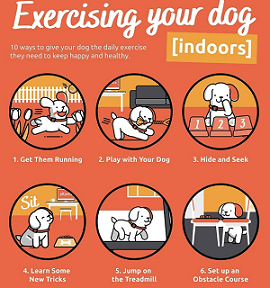Adult Labradors require at least 60 minutes of exercise daily. This can include walks, playtime, and other physical activities.
Labradors are known for their friendly demeanor and boundless energy. These dogs thrive on regular exercise to maintain their physical health and mental stimulation. A well-exercised Labrador is less likely to develop behavioral issues like chewing or barking. Regular physical activity helps prevent obesity, a common concern in this breed.
Engaging in varied activities, such as fetch or swimming, keeps their interest high. Owners should tailor exercise routines to their dog’s age, health, and energy levels. Understanding your Labrador’s needs will ensure a happy, healthy companion for years to come. Prioritizing their exercise helps foster a strong bond between you and your furry friend.
The Importance Of Exercise For Labradors
Regular exercise is vital for adult Labradors. It helps maintain their health and happiness. Without enough activity, Labradors can become overweight or develop health issues. Exercise also prevents boredom. Bored dogs often resort to destructive behaviors. Understanding their exercise needs is crucial for every Labrador owner.
Physical Health Benefits
Exercise offers numerous physical health benefits for Labradors. Here are some key advantages:
- Weight Management: Helps keep a healthy weight.
- Strong Muscles: Builds and maintains muscle mass.
- Joint Health: Supports joint flexibility and reduces arthritis risk.
- Cardiovascular Health: Improves heart and lung function.
- Longevity: Increases overall lifespan and quality of life.
Daily exercise keeps your Labrador fit. Aim for at least 60 minutes of activity each day. This can include walks, fetch, or swimming.
Mental Stimulation Needs
Labradors require mental stimulation as much as physical exercise. Here are ways to provide it:
- Interactive toys stimulate their brains.
- Training sessions improve focus and skills.
- Agility courses challenge their problem-solving abilities.
- Socialization with other dogs enhances their social skills.
Engaging their minds helps prevent boredom. Bored Labradors may chew furniture or dig holes. Keep them mentally active to maintain good behavior.

Credit: www.snowypineswhitelabs.com
Assessing Your Labrador’s Exercise Needs
Understanding your Labrador’s exercise needs is crucial. Regular activity keeps them healthy and happy. Each dog is unique. Factors like age, weight, and health affect their requirements.
Factors Influencing Exercise Requirements
Several factors determine how much exercise your Labrador needs:
- Age: Puppies need less exercise than adults. Senior dogs may need lighter activities.
- Weight: Overweight Labradors require more exercise to lose pounds.
- Health: Health issues can limit activity. Consult your vet for advice.
- Energy Level: Some Labradors are more energetic. High-energy dogs need more exercise.
Use the table below to gauge activity levels:
| Age Group | Recommended Exercise |
|---|---|
| Puppies (up to 1 year) | 30 minutes daily |
| Adults (1-7 years) | 1 to 2 hours daily |
| Seniors (7+ years) | 30 to 60 minutes daily |
Signs Of Inadequate Exercise
Watch for these signs to know if your Labrador needs more activity:
- Excessive barking: Bored dogs tend to bark more.
- Destructive behavior: Chewing furniture or digging indicates boredom.
- Weight gain: Increased weight suggests insufficient exercise.
- Restlessness: Dogs may pace or seem anxious.
- Low energy: A lack of enthusiasm during playtime is a warning sign.
Keeping track of these signs helps maintain your dog’s well-being. Regular exercise is key for a happy Labrador.
Ideal Exercise Types For Adult Labradors
Adult Labradors require regular exercise to stay healthy and happy. Different types of activities can help meet their needs. Here are the best exercise types for your Labrador.
Daily Walks And Their Length
Daily walks are essential for Labradors. Aim for at least 1 hour of walking each day. This can be split into two sessions of 30 minutes each.
Consider the following tips for daily walks:
- Choose a safe route.
- Vary the scenery to keep it interesting.
- Use a leash for safety.
Walking helps with:
- Weight management
- Joint health
- Mental stimulation
| Walk Duration | Activity Level |
|---|---|
| 30 Minutes | Moderate |
| 1 Hour | High |
Interactive Play And Training
Interactive play is vital for Labradors. Games like fetch and tug-of-war are great options. These activities boost energy levels and strengthen your bond.
Training sessions provide mental challenges. Short sessions of 5-10 minutes work best. Focus on basic commands like:
- Sit
- Stay
- Come
- Heel
Consider incorporating these activities:
- Agility courses
- Swimming
- Hide and seek
Mixing play and training keeps your Labrador engaged. Aim for at least 30 minutes of interactive play each day.

Credit: www.pitpat.com
Creating A Balanced Exercise Routine
Designing a balanced exercise routine is crucial for your adult Labrador. It ensures they stay fit, healthy, and happy. A well-rounded plan includes various activities and sufficient rest.
Incorporating Variety
Variety keeps your Labrador engaged and excited about exercise. Different activities can enhance their physical and mental health. Here are some fun options:
- Walking: Daily walks are essential. Aim for at least 30 minutes.
- Fetch: A game of fetch boosts energy and strengthens muscles.
- Swimming: Great for joint health and cooling down.
- Agility training: Obstacle courses challenge their mind and body.
- Playdates: Socializing with other dogs promotes happiness.
Mixing these activities can prevent boredom. Adjust the routine based on your dog’s energy levels.
Understanding Rest Days
Rest days are vital for recovery. They help prevent injuries and fatigue. Here’s how to schedule them:
- Frequency: Include at least one rest day per week.
- Signs of fatigue: Watch for excessive panting, limping, or reluctance to play.
- Activities on rest days: Light walks or gentle play can be beneficial.
Listening to your Labrador is key. Adjust their routine based on how they feel.
Monitoring And Adjusting Exercise Plans
Every adult Labrador needs a tailored exercise plan. Monitoring their activity helps ensure they stay healthy. Adjustments may be necessary based on their response. Understanding your dog’s needs is essential for their well-being.
Observing Your Dog’s Response
Watch your Labrador closely during and after exercise. Signs of fatigue or discomfort can indicate a need for change. Look for these signs:
- Excessive panting
- Slowing down
- Refusal to continue
- Visible limping
- Restlessness at night
Each dog is unique. Their response to exercise varies. Regular observation helps identify what works best.
When To Increase Or Decrease Activity
Adjusting exercise levels can ensure your Labrador remains healthy. Here are guidelines for when to change their routine:
| Situation | Action |
|---|---|
| Dog shows high energy | Increase exercise time or intensity |
| Dog seems tired or lethargic | Decrease exercise duration |
| Weather changes drastically | Modify exercise to indoor activities |
| Age-related mobility issues | Switch to low-impact activities |
Regularly adjust their exercise based on these factors. Keeping your Labrador active is vital for their happiness.

Credit: www.labradortraininghq.com
Conclusion
A well-exercised Labrador is a happy and healthy companion. Aim for at least one hour of activity daily to meet their needs. Regular walks, playtime, and mental stimulation are essential. By understanding your Labrador’s exercise requirements, you can foster a strong bond and enhance their overall well-being.
Keep them active and engaged!
